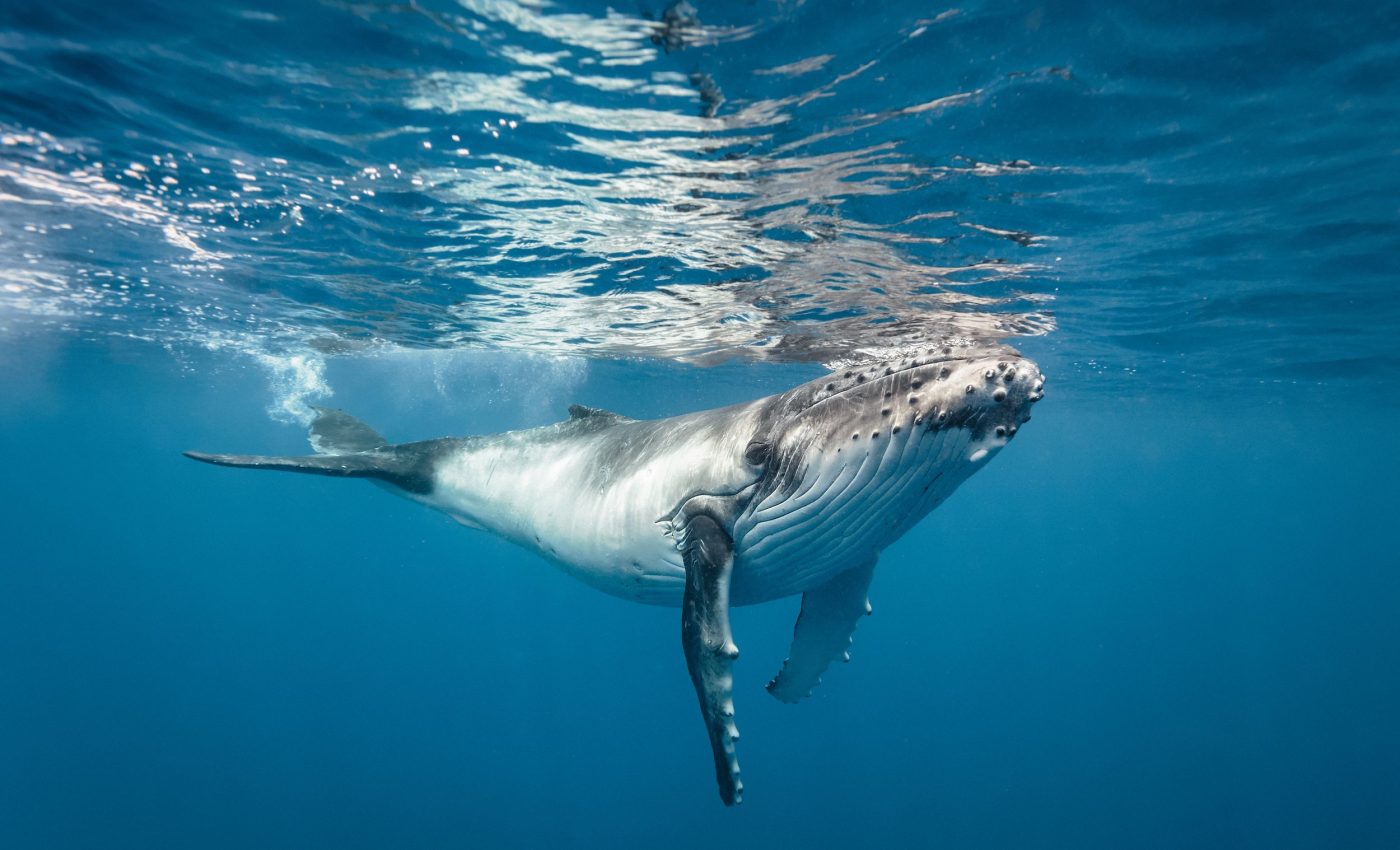
Baby whales need massive amounts of energy to survive
Life begins with immense hunger for humpback whales. From their first breaths, newborn calves face an extraordinary challenge: rapid growth that demands astonishing amounts of energy.
New research from the University of Hawaiʻi at Mānoa’s Hawaiʻi Institute of Marine Biology (HIMB) reveals just how extreme this demand is.
Combined with additional findings on whale metabolism and thermoregulation, the study offers deeper insight into how these giants balance survival and growth in an ever-changing ocean.
Whales need more energy
The research shows that newborn humpback calves need 38 times more energy after birth than inside the womb.
Study lead author Martin Van Aswegen is a postdoctoral researcher at HIMB’s Marine Mammal Research Program (MMRP).
“This study addresses a key piece of the energetic puzzle in estimating the cost of being a humpback whale in the North Pacific: the cost of growth,” said Van Aswegen.
“While previous research has shown that these whales must grow very large in a short period of time, the actual energetic expense of that accelerated growth remained unknown.”
How whales use energy
Newborn calves experience a steep rise in basal metabolic rate as they transition from a stable womb environment to cold ocean waters.
Studies of marine mammal physiology suggest that calves must increase metabolic heat production to maintain body temperature, since their blubber layer is still developing.
Much of their energy intake from the mother’s milk supports both thermoregulation and rapid tissue growth. This dual demand highlights why energy-rich milk and sufficient maternal fat reserves are essential for calf survival.
Growing at full speed
The researchers discovered that calves use six to eight times more daily growth energy than adults.
Within their first year, they achieve about 30 percent of their total lifetime growth. Over 60 percent of this growth energy is concentrated within the first 150 days of life.
Humpback mothers, meanwhile, face their own extreme test. They must produce enough milk while fasting during their stay in the Hawaiian breeding grounds, before migrating back to Alaska to feed.
This journey leaves both mother and calf vulnerable when food scarcity strikes.
A mother’s energy balance
The researchers found that a mother’s ability to give birth to a healthy calf depends entirely on her stored energy.
Larger females with greater reserves can invest more in their offspring, while smaller females face difficult trade-offs. Their limited energy affects both the size of their calves and how frequently they can reproduce.
“By quantifying the energetic demands of growing big and strong, we provide crucial insight into how external pressures, including climate change and human disturbance, may affect the survival and resilience of these ocean giants,” said Van Aswegen.
Troubling size decline
The researchers also observed a concerning trend. Mature humpbacks today are shorter than those recorded in the mid-1900s, showing a decline of about one to two feet.
Between 2013 and 2018, sightings of mother-calf pairs dropped by 76.5 percent, and birth rates fell by 80 percent in Hawaii. These declines coincided with a record-breaking marine heat wave that limited food supply.
Mothers struggled to gain enough energy to nurse, leaving calves and juveniles, whose energy needs are highest, especially vulnerable.
Ecological pressures on whales
Additional research into ocean warming and prey availability shows that shifts in krill and small fish populations directly influence whale health.
Reduced prey density forces whales to expend more energy foraging, further straining mothers during migration. Such ecological feedback loops can reduce reproductive success and affect population recovery.
Warmer ocean temperatures also alter plankton distribution, weakening the entire food chain that supports baleen whales.
Energy for survival
Professor Lars Bejder is the director of the HIMB Marine Mammal Research Program and senior author of the study.
“If humpback whales are to survive threats like extreme marine heat waves and other stressors that result from human activity, we need to understand precisely how reproductive females accumulate and allocate energy to support the exponential costs of gestation and lactation,” noted Professor Bejder.
“This knowledge is the foundation for making the urgent conservation changes required for the population’s future.”
Innovative study tools
The research team used drones to capture high-resolution aerial photos of over 1,500 humpback whales in Hawaiʻi and Southeast Alaska. These images, paired with historical data and biological samples, allowed scientists to measure energy demands across whale lifespans.
“This noninvasive approach gives us a rare look at whale biology as they live, instead of relying only on historical whaling data from the 1900s,” said Van Aswegen.
Their humpback health database now includes over 12,000 measurements from 8,500 individual whales across the North Pacific.
Learning whale energy needs
The database connects with projects that analyze movement patterns, hormone data, and postmortem tissue samples.
The research further explains how drone imagery, blubber thickness analysis, and computational modeling improve estimates of whale metabolism and energy budgets. Combined, these techniques create a detailed view of whale physiology and environmental stress response.
Together, the findings demonstrate that saving humpbacks requires understanding the fine balance between energy, environment, and survival – a balance that defines life in the deep.
The study is published in the journal Marine Ecology Progress Series.
—–
Like what you read? Subscribe to our newsletter for engaging articles, exclusive content, and the latest updates.
Check us out on EarthSnap, a free app brought to you by Eric Ralls and Earth.com.
—–













